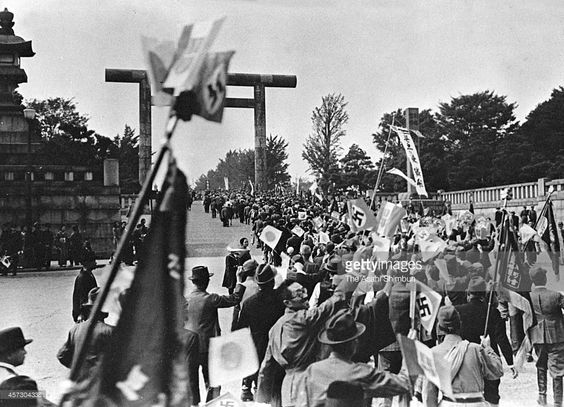Sunday 13 October 1940
 |
| Future Queen Elizabeth, right, and Princess Margaret make their radio address on 13 October 1940. |
The first significant intrusion is after lunchtime. At 13:00, the Luftwaffe sends over several dozen fighter-bombers (Jabos) escorted by III,/JG 3. They bomb Woolwich and the tracks at Hackney and Dalston. RAF Nos. 46, 66 and 92 Squadrons intercept from underneath - the Bf 109s are flying at 27,000 feet - and the Luftwaffe loses a fighter.
Another series of raids occur after 14:00. This includes some fast Junkers Ju 88s along with the Jabos and escorting fighters. The formation splits at the coast and heads for London and Hornchurch. Fighter Command sends up 14 squadrons to attack Bf 109s of JG 27 and 54. The Luftwaffe gets the best of this encounter, with the German pilots claiming half a dozen victories.
At 15:30, more Jabos cross at Dover. RAF No. 66 defends, but the Jabos reach their targets in London.
After dark, London, Liverpool, Hull, East Anglia, Huddersfield, Grantham and the Midlands are bombed. The raids cause extensive damage and, at London, continue until daylight. Losses for the day are about even at a handful apiece.
The first set of coincidences is separate friendly fire incidents, which are fairly rare during the Battle of Britain. One occurs at 18:20 when two Blenheims of RAF No. 29 Squadron, engaged in a standard patrol about 10 miles from North Weald, are attacked by Hurricanes of RAF No. 312 (Czech) Squadron. One Blenheim quickly fires off two Very lights and escapes significant damage, but the other is shot down into the water. There is one fatality.
Another friendly fire incident occurs over Chatham when P/O J.K.Ross of RAF No. 17 Squadron is shot down and wounded by anti-aircraft fire. He survives by bailing out of his Hurricane.
The other coincidences are even more deadly. Londoners have seen the underground subway system as a secure series of shelters during the Blitz. However... not necessarily. There are numerous incidents tonight of bombs blasting through the surface and causing deaths and other casualties in these supposedly secure settings.
Stanmore Underground Station takes damage, and 154 civilians perish in a shelter at Stoke Newington. Wembley Park Station also takes damage. At Bounds Green Piccadilly Station, a bomb destroys a house just above the eastbound line. This collapses the tunnel and injures/kills the people sheltering there. A 250 lb bomb hits an air raid shelter at Newcastle, killing 21. Other shelters also take damage and casualties: Marsh Road, Argyle Street, Farrer Street, Hardman Street, Benjamin Street, and Hatherley Street.
Bomber pilots seldom get much glory, though they are put at great hazard and suffer tremendous casualties. Today one of them, Lt. Hajo Herrmann of KG 30, receives the Ritterkreuz
European Air Operations: RAF Bomber Command focuses on the German-held ports, including the Mole at Zeebrugge, Domburg Harbour, Kiel, and Wilhelmshaven. Other targets include the Krupps factory at Essen and oil installations at Duisberg and Gelsenkirchen. A total of 125 bombers are in action.
The Tirpitz, well along in its construction, remains a sort of tar baby for the RAF (as it will be throughout the war). Once again, RAF Bomber Command sends a group of bombers to attack it. Only four Hampden bombers actually attack due to poor weather. If one calculates the sum total of British attempts to sink the Tirpitz and balances that against the effort to build her, the scale likely would tilt decisively in the German battleship's favor.
U-103 (Viktor Schütze) continues a successful maiden cruise, patrolling west of the Outer Hebrides. At 08:46, it torpedoes and badly damages 1186 ton Estonian timber freighter Nora. The lifeboats are destroyed in the attack, so Schütze deviates from standing orders and radios a distress call giving the survivors' position. The ship remains afloat long enough for the survivors to be picked up by sloop HMS Leith on the 18th.
U=37 (Kptlt. Victor Oehrn) torpedoes and sinks 5804-ton British freighter Stangrant in the Atlantic west of the Outer Hebrides at 19:57. Stangrant is a straggler from Convoy HX 77. There are 30 survivors and 8 crew perish. A Sunderland flying boat of 10 Squadron RAAF rescues the survivors. This is Captain Oehrn's final U-boat victory, as he transfers to a shore-side staff position after this. He has sunk 23 ships totaling 103,821 tons.
U-138 (Oberleutnant zur See Wolfgang Lüth) damages 4562-ton Norwegian freighter Dagrun in Convoy HX 77 in the western Atlantic. After this voyage, Lüth receives the Iron Cross.
Royal Navy 98 ton converted fish trawler/patrol drifter HMT Summer Rose (PD594) hits a mine and sinks in the North Sea near Sunderland in County Durham. There are two deaths.
Royal Navy 234 ton rescue tug HMS Danube III hits a mine and sinks in the Thames Estuary northeast of sheerness, Kent. Eleven men perish.
British 1130 ton barge Cargo Fleet No. 2 hits a mine just west of Datum Buoy off Tees. The barge is taken in tow, but breaks the line and drifts ashore and is destroyed. No casualties.
German auxiliary minesweepers Gnom 7, Kobold 1 and Kobold 3 sweep the wrong minefield, hit mines and sink in the North Sea.
The Royal Navy completes an extensive sweep of Scapa Flow (except for a small part northeast of Barrel of Butter), which has been securely sealed since the embarrassing Royal Oak incident of 1939. This permits anti-submarine exercises to begin.
Convoys OL 7 and OB 228 depart from Liverpool, Convoy FN 307 departs from Southend, Convoy FS 308 departs from Methil,
 |
| Dedication of a memorial to the Spanish-American War, 13 October 1940. |
Royal Navy gunboat Ladybird assaults Italian positions at Sidi Barrani.
The South African Air Force makes its fifth raid against Neghelli in southern Abyssinia. The British send a patrol across the Abyssinia border and cause some casualties on Italians southeast of Kassala.
Italian destroyer Artigliere, in tow after heavy damage at the Battle of Cape Passero, is sunk by British cruiser HMS York using torpedoes. The British ships, which include cruiser HMS Ajax (the victor in the night action) and several destroyers, drop rafts for the survivors and allow the Italians to rescue them later.
Royal Navy aircraft carriers HMS Eagle and Illustrious launch raids against Italian-held Leros island as they continue their withdrawal from their escort duties of the recent (successful) Malta convoy.
Romanian dictator Ion Antonescu is concerned about Allied air attacks (none of which have happened to Romania yet). He requests some Luftwaffe assistance. Hitler accedes and sends the Luftwaffe's night intruder force to the Mediterranean area.
The First Lord of the Admiralty issues a memorandum to the War Cabinet. It urges a concentrated effort against Italy:
I feel that what we must aim at is to knock Italy out of the Axis as soon as possible and at the same time avoid, if we can, the full entry of France into the Axis. If we are to achieve the first of these, it is vital that we should strengthen Malta, reinforce the Eastern Mediterranean Fleet and the forces under the command of the General Officer Commanding Middle East. The bulk of our efforts must be applied in this direction, until at any rate we have carried out our special operation for putting through reinforcements through the Mediterranean to Malta and the Middle East.In an unrelated but coincidental event (see below), the British Secretary of State visits Malta today by RAAF Sunderland flying boat. It lands at Kalafrana in the dark in poor weather. After touring the island, he prepares to leave in the morning.
 |
| Charlie Chaplin at a press conference held at the Waldorf-Astoria Hotel in New York City for "The Great Dictator," 13 October 1940. |
The New World Order is like the weather: everyone talks about it, but very few people ever do anything about it. Today, 13 October 1940, however, someone actually tries to do something concrete about it.
Hitler and Ribbentrop, along with others in the German high command such as Admiral Raeder, have been trying to figure out a way to avoid a war with the Soviet Union. Their latest theory is that the world should be divided up into spheres of influence, with Germany taking Europe, the Soviet Union dominating central Asia down through India, and the Japanese taking the Asian coastal regions. Italy would have control over Africa.
In pursuit of this somewhat hopeful theory, Ribbentrop sends the German embassy in Moscow a long letter for Stalin which basically recites the course of the war to date with a rather defensive attitude. It then goes on to suggest some ideas of cooperation for the future. The letter makes numerous points, including:
- Germany essentially had been forced to continue the war through British and French "games";
- Great Britain essentially is finished;
- Germany has no military intentions regarding the Soviet Union;
- He explains away recent events in Scandinavia as purely defensive;
- Germany desired a long-term agreement with the USSR, Italy and Japan regarding respective spheres of influence "which would last for centuries";
- Soviet Foreign Minister Molotov should come to Berlin to discuss this further, with discussions to continue at Moscow.
In summing up, I should like to state that, in the opinion of the Führer, also, it appears to be the historical mission of the Four Powers—the Soviet Union, Italy, Japan, and Germany—to adopt a long-range policy and to direct the future development of their peoples into the right channels by delimitation of their interests on a world-wide scale.In fairness to Ribbentrop, these types of eternally long essays are fairly common in diplomatic efforts of the day. The letter is sent today to the German embassy in Moscow for translation, which literally takes several days.
China: The Japanese have been bombing the Nationalist capital of Chungking steadily for months, and the Chinese fighters have been unable to stop them. Recently, the appearance of the new Mitsubishi A6M Zero fighters has made that task even more difficult. However, there are many ways to skin a cat, and today the Nationalists show how crafty they can be. In great secrecy, they have smuggled artillery pieces through Japanese lines to within range of Ichang airfield, the forward staging base close to Chinese lines which they captured on 12 June. Ichang is of great importance because it is within 400 miles of Chungking and thus a fairly easy trip for bombers.
Elsewhere, the Chinese attack Japanese positions at Lungchin during the continuing Battle of South Kwangsi.
British Homefront: Princess Elizabeth, 14, makes her first public speech. It is a radio address to the children of the British Commonwealth. Princess Margaret, 10, joins in. Elizabeth says that England's children are cheerful and courageous.
 |
| Un-Americans are a big concern at the University of Nebraska. The Daily Nebraskan, 13 October 1940. |
October 2, 1940: Hitler's Polish Plans
October 3, 1940: British Cabinet Shakeup
October 4, 1940: Brenner Pass Meeting
October 5, 1940: Mussolini Alters Strategy
October 6, 1940: Iron Guard Marches
October 7, 1940: McCollum Memo
October 8, 1940: Germans in Romania
October 9, 1940: John Lennon Arrives
October 10, 1940: Führer-Sofortprogramm
October 11, 1940: E-Boats Attack!
October 12, 1940: Sealion Cancelled
October 13, 1940: New World Order
October 14, 1940: Balham Tragedy
October 15, 1940: Mussolini Targets Greece
October 16, 1940: Japanese Seek Oil
October 17, 1940: RAF Shakeup
October 18, 1940: Convoy SC-7 Catastrophe
October 19, 1940: Convoy HX-79 Catastrophe
October 20, 1940: Convoy OB-229 Disaster
October 21, 1940: This Evil Man Hitler
October 22, 1940: Aktion Wagner-Burckel
October 23, 1940: Hitler at Hendaye
October 24, 1940: Hitler and Petain
October 25, 1940: Petain Woos Churchill
October 26, 1940: Empress of Britain Attack
October 27, 1940: Greece Rejects Italian Demands
October 28, 1940: Oxi Day
October 29, 1940: US Draft Begins
October 30, 1940: RAF Area Bombing Authorized
October 31, 1940: End of Battle of Britain
2020


No comments:
Post a Comment